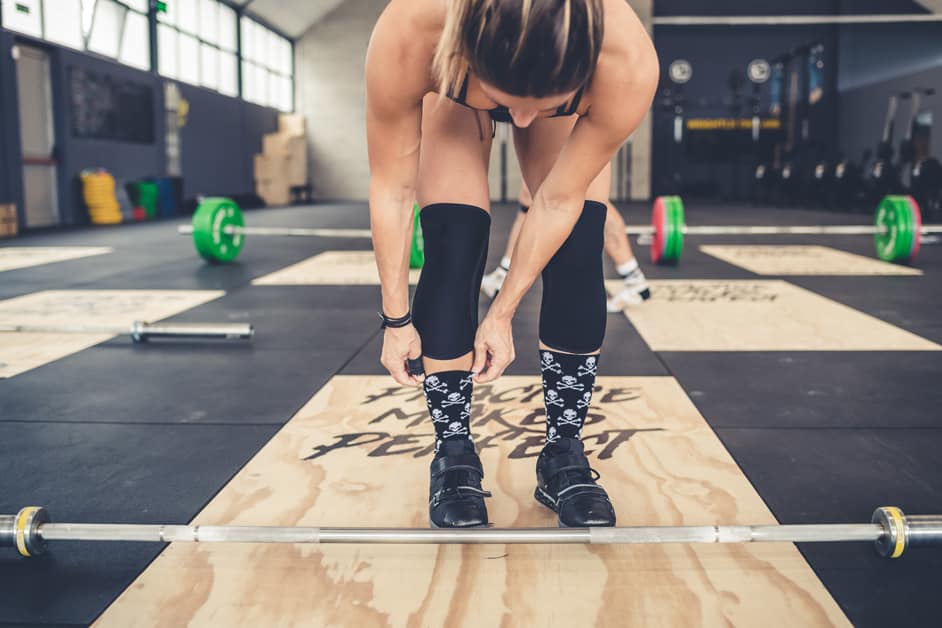Introduction
Knee pain? You’re in luck! A knee brace can help. It provides compression, support and stability to your knees. This can reduce pain and swelling. Get the right brace and you can manage your knee pain and get back to your regular activities. Here’s how to pick and use a knee brace for relief:
Overview of knee pain
Knee pain is common. It can range from mild to very severe. It may need treatment with physical therapy, medications, or a brace.
A doctor may recommend a brace to help heal and protect from more damage. Braces support, provide stability, and distribute pressure.
Braces come in many sizes, materials, and configurations. It is important to choose the right one for your needs. This guide helps understand how a brace can help with knee pain, and how to choose the best one:
- What type of brace should I choose?
- How does a brace help with knee pain?
- What are the different types of braces?
- What are the benefits of wearing a brace?
- How do I choose the right size and fit?
Causes of knee pain
Knee pain can be caused by many different things. It’s important to understand what is causing your knee pain to figure out the best way to treat it. Depending on the source of your knee pain, there are different methods to ease symptoms. Here are some of the typical causes of knee pain:
- Injury or trauma: Sudden and severe pain, swelling, and difficulty standing may be a result of fractures, dislocations, ligament sprains and tears, meniscus injuries, cartilage injuries, or patellar subluxation (dislocation).
- Osteoarthritis: Mostly found in older adults, but can affect younger people too. Stiffness and damage to joint cartilage occurs over time, usually in larger joints like the hips and knees.
- Rheumatoid arthritis: When your immune system attacks healthy tissue, like the synovial membrane that lines your joints, swelling and pain occur.
- Gout: Too much uric acid builds up, creating needle-like crystals in joint spaces. This leads to burning pain, redness, warmth, and swelling around the affected joints, often in the knees.
Bursitis, tendonitis, and popliteal cyst (Baker’s cyst) can also cause knee pain. If home remedies or self-care measures don’t help, consult with a medical professional. They will ask about other health conditions and do a physical exam before making an assessment. Together you can decide on the best type of treatment for you.
Benefits of Knee Braces
Knee braces have been popular for many years, providing relief and stabilization to those with knee pain. They help with everyday activities and reduce pain, plus protect from new injuries. Plus, they are affordable, making them accessible.
This guide will look into the benefits of knee braces for injury prevention and pain control:
Types of knee braces
Selecting the right knee brace is essential for going back to activity or dealing with persistent pain. The brace you pick and the fit depends on your injury and lifestyle. Here are some of the main kinds of braces you could use:
- Ankle-foot orthosis (AFO): People with a weak or injured ankle and leg, and those with neurological conditions, like spasticity, often use AFOs to avoid further damage.
- Hinged Knee Braces: These braces have plastic casing and metal hinges that provide compression, support, and stability, as well as allowing motion of the lower leg.
- Rehabilitation Knee Braces: These braces protect injured knees during recovery from injury or surgery. They strengthen weakened muscles, keep joint stability, and encourage stretching for better mobility with proper posture.
- Functional/Prophylactic Knee Braces: Athletes wanting to prevent injury to healthy knee joints use these braces. For instance, those in contact sports such as soccer, football, or skiing, or those doing vigorous physical activities like manual labor. They protect against valgus (non-contact) forces on the knee that could cause a ligament tear.
- Compression Sleeve: These sleeves don’t offer much mechanical protection but they provide compressive benefits. Some have adjustable side supports and others have heat retention properties to ease chronic pain.
How knee braces help manage knee pain
Knee braces are great for weak or injured knees. They can help reduce pain and discomfort. They can improve function, protect from more harm, and offer stability. A brace can be used for mild sprains, post-surgery, and chronic knee pain from conditions like arthritis.
They provide support on the side of your knee. This keeps the joint stable and helps with shifting of the patella during stairs, bending, and straightening your leg. Muscles in the leg get more help from the brace to maintain control of your joints.
A good brace can also reduce rotational instability, while allowing full range of motion, and relieving pain from overuse injuries. It stops ligaments from overstretching, and distributes pressure evenly across all points of contact. This stabilizes weakened ligaments or muscles during movement, like running or stretching.
The right type of brace, with custom adjustments, can help with physical therapy and sports activities. It offers protection, but still lets the muscles do their job. It can also manage long-standing joint damage, and prevent permanent disability.
Choosing the Right Knee Brace
Knee braces come in a variety of styles, sizes and materials. It’s vital to pick the right one. What features you need depends on how bad your knee pain is and what you plan on doing while wearing it.
Let’s look at the features of knee braces and how to select the right one for you:
Factors to consider when selecting a knee brace
When experiencing knee pain, braces can be helpful. They provide stability, reduce swelling, and make movement easier. But with many styles, sizes, and materials to pick from, it’s hard to choose the best one for you. Here are some factors to consider before buying:
- Medical conditions – Pick a brace that meets your needs. For example, those with osteoarthritis need to immobilize completely, while those with a sprained MCL just need some stability.
- Type of injury and level of support – Choose a functional or prophylactic brace for joint protection, or an unloader brace with pivoting hinges for symptom management.
- Material – Neoprene stabilizes with heat, while Breathable Mesh is lightweight.
- Size – Universal or specific size? Make sure it fits correctly to get maximum comfort and support.
- Adjustability – Adjustable straps and fastenings help customize compression and fit.
- Comfort level – Some braces have padding, others are rigid. Consider your needs and preferences when selecting.
Different types of knee braces
When it comes to knee pain, the best decision is choosing the right brace. There are lots of kinds – each with its own purpose. Before buying, talk to a doctor about the cause of your pain and which type fits your lifestyle.
Knee braces are for extra support and protection when joints are weak or hurt. The common types are:
- Patellofemoral: improve kneecap tracking and help relieve pain from misalignment/instability.
- Unloader/Offloader: for arthritis, providing support and realigning the leg for more stability/movement.
- Hinged: rigid stabilization for joint injuries/instabilities. Hinges allow flexion and stop hyperextension.
- Compression: fits under clothes with targeted compression and improved circulation.
- Rehabilitative: extra stability during recovery when used with doctor guidance.
It’s important that you find a brace which fits and offers adequate support. Different materials can provide different levels of comfort and support; research all available options!
Use and Care of Knee Braces
Knee braces are a good way to lessen knee pain. They can help you feel more stable, balanced, and sure of yourself when doing activities. However, for them to work, you have to use them properly. The right size and fit are important. Plus, you need to take care of them. This guide will teach you how to do that.
Tips for using a knee brace
A knee brace can help manage knee pain. Here are tips to use it properly:
- Get the right size for coverage & comfort.
- Wear it all the time when your knee is in pain.
- Don’t wear it too tight or too long, or it can reduce blood flow & cause numbness/tingling in your lower leg.
- If stiff, use a warm towel around the joint, then put the brace on.
- For severe ligament sprains, use a rigid hinged support with patella cutout for extra stability.
- If using an adjustable compression system (like an aircast), wear it snugly but not too tight.
- Ask questions about proper use for better knee pain management.
Caring for a knee brace
Knee braces need special attention to work properly. To keep them in good condition and protect against injuries, inspect metal and plastic parts, clean with mild soap and warm water, and fasten straps. Then air-dry and store away from direct sunlight. Proper care and maintenance can offer extra support and protection from joint pain. So, inspect regularly and extend the life of your knee brace – safeguarding it and promoting good health.
Conclusion
To wrap up, managing knee pain is achievable. Pick the correct knee brace for your needs. Comprehend the varieties of braces out there. Investigate each one thoroughly to guarantee you get the most suitable one. Knowing about knee pain, causes, and treatments will facilitate you to make wiser choices for getting relief.
Summary of knee pain management with the right brace
Knee pain can be tough. People who suffer from it understand the need for a brace that fits their needs. The right brace can provide support, reduce stiffness, increase mobility, and reduce pain. Some braces are for active lifestyles, others for sedentary activities. Different types of braces have different materials, designs, and styles.
When choosing a brace, it is important to think about how you can manage your knee pain with the least amount of restriction and most mobility. Talk to your doctor or physical therapist before getting a brace so it fits properly and meets your lifestyle needs. Proper consideration when buying a knee brace can help you get a brace that will reduce your discomfort and allow you to live an active life without pain.
Frequently Asked Questions
Q: What causes knee pain?
A: Knee pain can be caused by a variety of factors including overuse, injury, arthritis, or any structural problems within the knee.
Q: What are the benefits of using a knee brace for pain management?
A: Knee braces can help provide stability, reduce inflammation, and improve the alignment of the knee joint. They can also help reduce pain and prevent further injury.
Q: What should I look for when choosing a knee brace?
A: When choosing a knee brace, you should consider factors such as the type of injury, the level of support needed, the intended activity, and fit. It’s important to get a brace that’s comfortable and provides the right amount of support.





